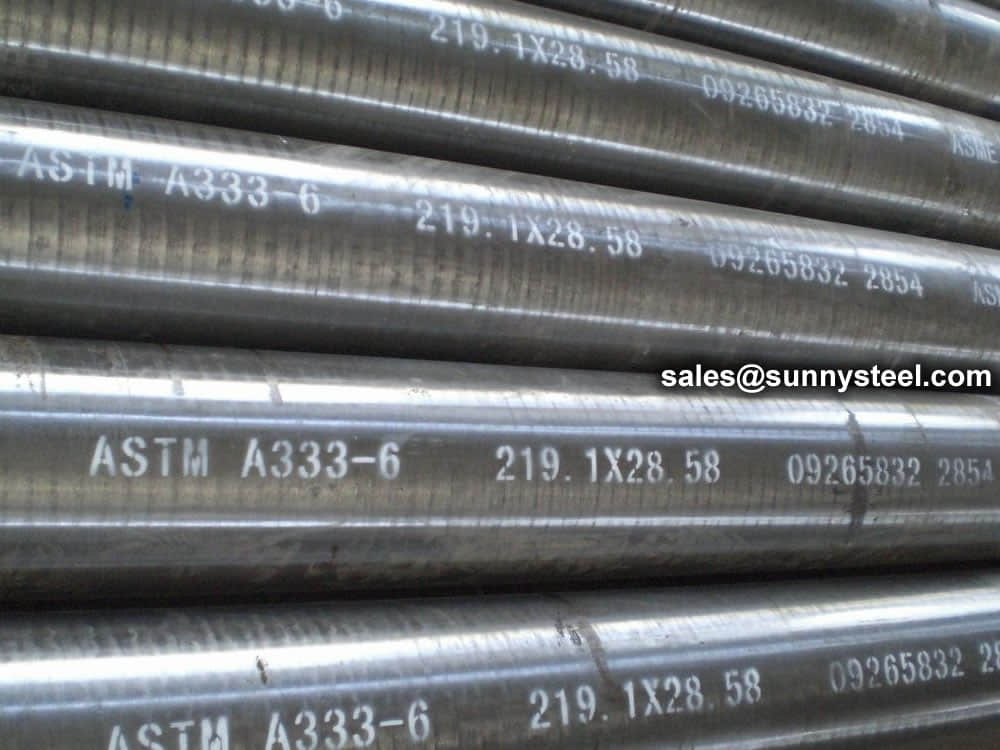Bearing Pipes
Pipes designed for bearing loads, offering high strength and durability.

Steel pipes for cryogenic devices are specifically designed to handle extremely low temperatures and are commonly used in applications involving the storage and transportation of cryogenic fluids.
Cryogenic piping refers to systems that are used in a wide range of industrial applications that require extremely low temperatures, generally around -300°F (150°C) or lower.
Steel pipes for cryogenic devices are manufactured according to various standards and specifications, such as ASME SA-333M, GB/T18984, and ASTM A333. These standards ensure the pipes' suitability for low-temperature service and provide guidelines for their design and manufacturing.
Steel pipes for cryogenic devices are specially designed to handle the challenges posed by low-temperature applications. These pipes are made from high-quality materials that can withstand the stresses of cryogenic service, ensuring safe and efficient transport of cryogenic fluids such as liquid nitrogen, liquid oxygen, and LNG.
The properties of steel pipes for cryogenic devices are critical to their performance:
Steel pipes for cryogenic devices are used in a variety of applications, including:
Cyrogenic piping is also referred to as cold piping.
Implement specifications such as ASME SA-333M, GB/T18984. The seamless steel tubes are applied for low temperature pressure vessel pipeline and low temperature heat exchanger pipeline.
| Usage | Specification | Steel Grade |
|---|---|---|
| Seamless and Welding Nominal Pipe used for Low Temperature | ASME SA -333M | Gr.3, Gr.6, Gr.8 and so on |
| Seamless Steel Pipe used for Low Temperature Pipeline | GB/T18984 | 16MnDG, 06Ni3MoDG, 06Ni9MoDG and so on |
ASTM A333 (ASME S/A-333) Pipe grades permit low temperature service.
GB/T18984-2003 standard suitable for -49 to -148 0 F cryogenic pressure vessel piping, and low-temperature heat exchanger tubes seamless steel pipe.
| Grade | C | Si | Mn | P(max) | S | Ni | Mo | V |
|---|---|---|---|---|---|---|---|---|
| 16MnDG | 0.12-0.20 | 0.20-0.55 | 1.20-1.60 | 0.025 | 0.025 | - | - | - |
| 10MnDG | <=0.13 | 0.17-0.37 | <=1.35 | 0.025 | 0.025 | - | - | <=0.07 |
| 09DG | <=0.12 | 0.17-0.37 | <=0.95 | 0.025 | 0.025 | - | - | <=0.07 |
| 09Mn2VDG | <=0.12 | 0.17-0.37 | <=1.85 | 0.025 | 0.025 | - | - | <=0.12 |
| 06Ni3MoDG | <=0.08 | 0.17-0.37 | <=0.85 | 0.025 | 0.025 | 2.5-3.7 | 0.15-0.30 | <=0.05 |
| Grade | Tensile strength | Lower yield strength(Rcl/Mpa) | Elongation | |
|---|---|---|---|---|
| Rm/Mpa | W.T.<=16mm | W.T.>16mm | A/% | |
| 16MnDG | 490-665 | >=325 | >=315 | >=30 |
| 10MnDG | >=400 | >=240 | >=35 | |
| 09DG | >=385 | >=210 | >=35 | |
| 09Mn2VDG | >=450 | >=300 | >=30 | |
| 06Ni3MoDG | >=455 | >=250 | >=30 | |
(Not more than 25 mm) outside diameter and wall thickness of the steel pipe shall conform to GB/T 17395-1998 Table 1 provisions. According to the requirements of the demand side, the supply and demand sides consultation, produce the provisions specifications steel pipe.
